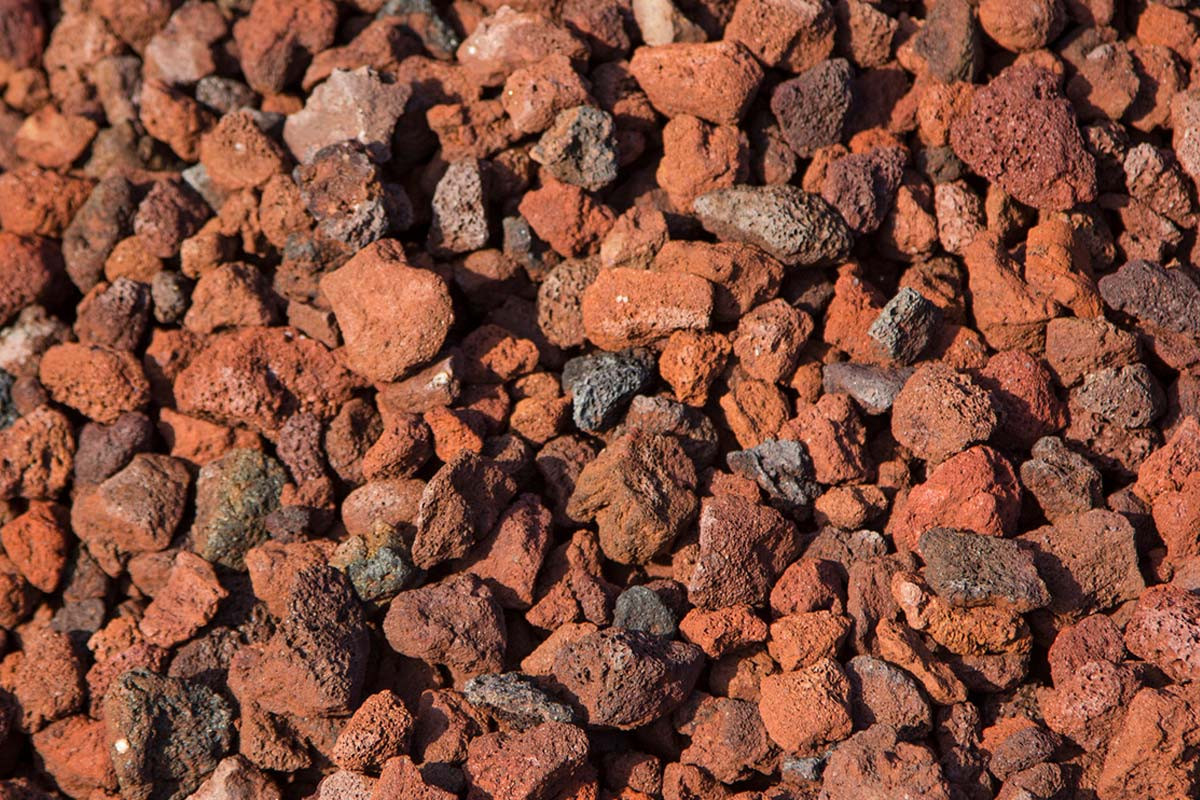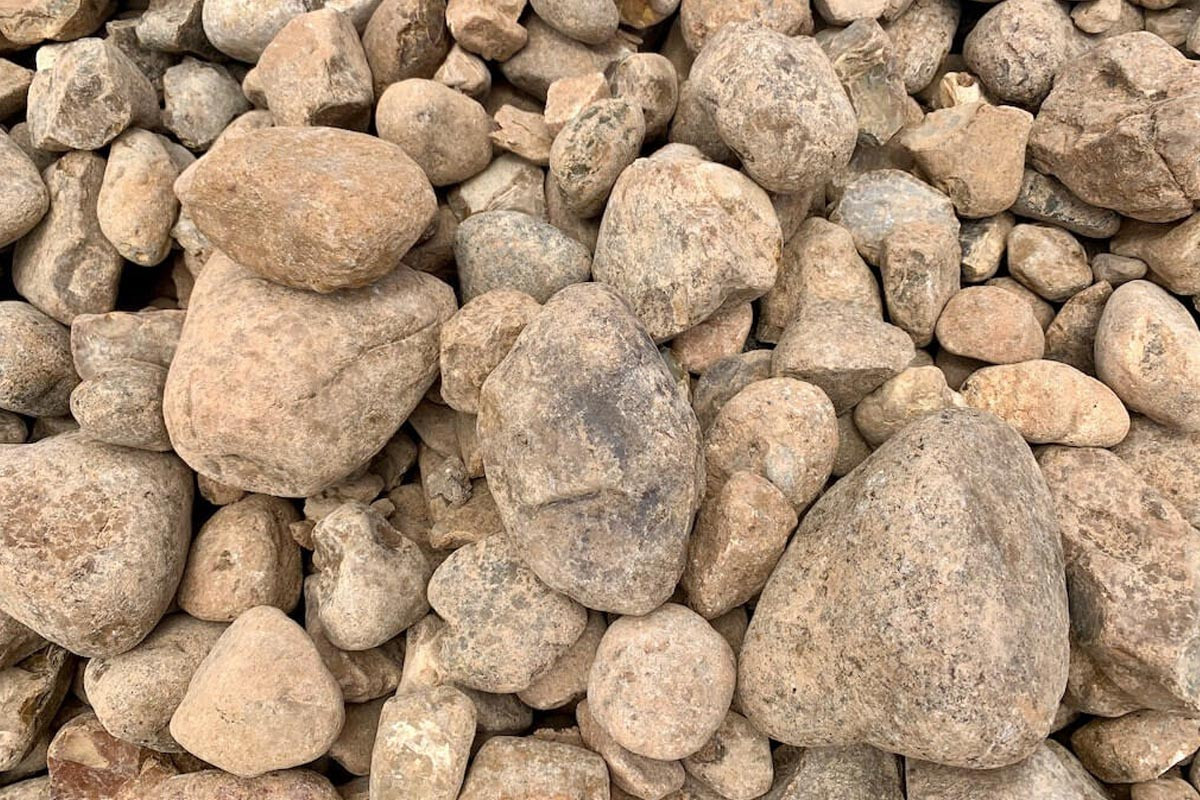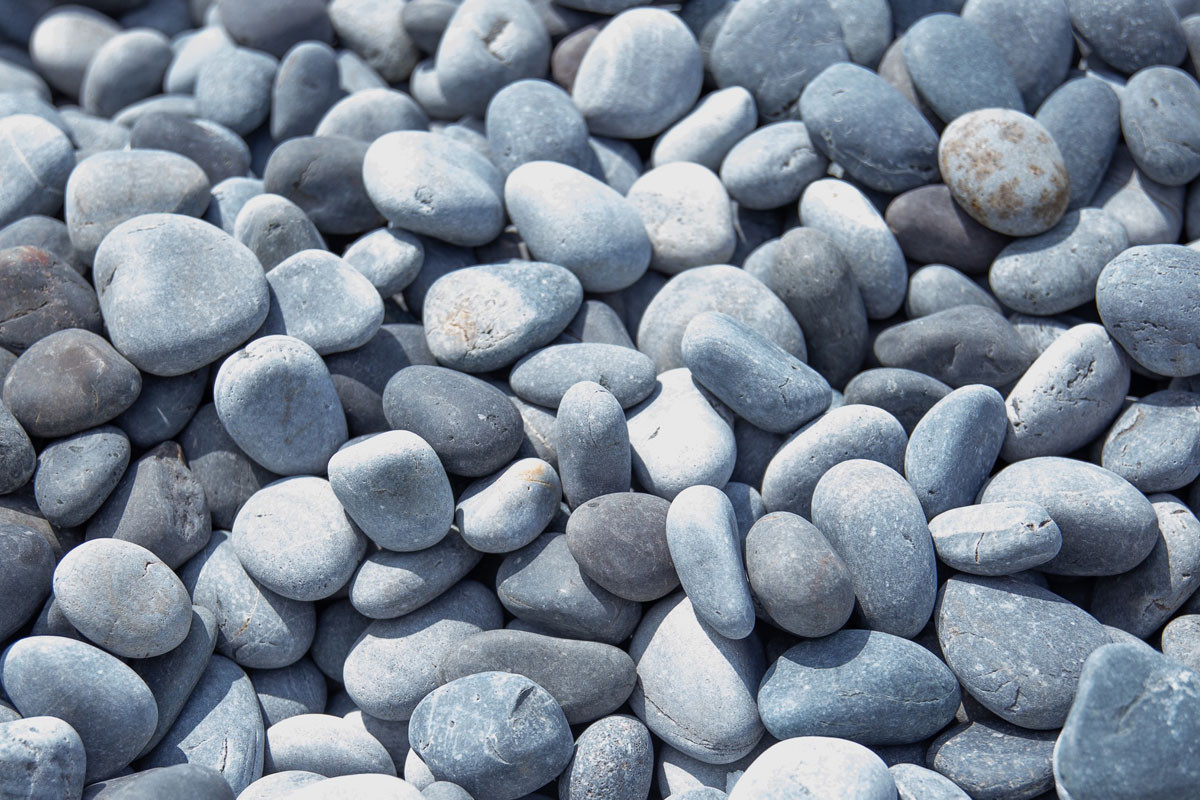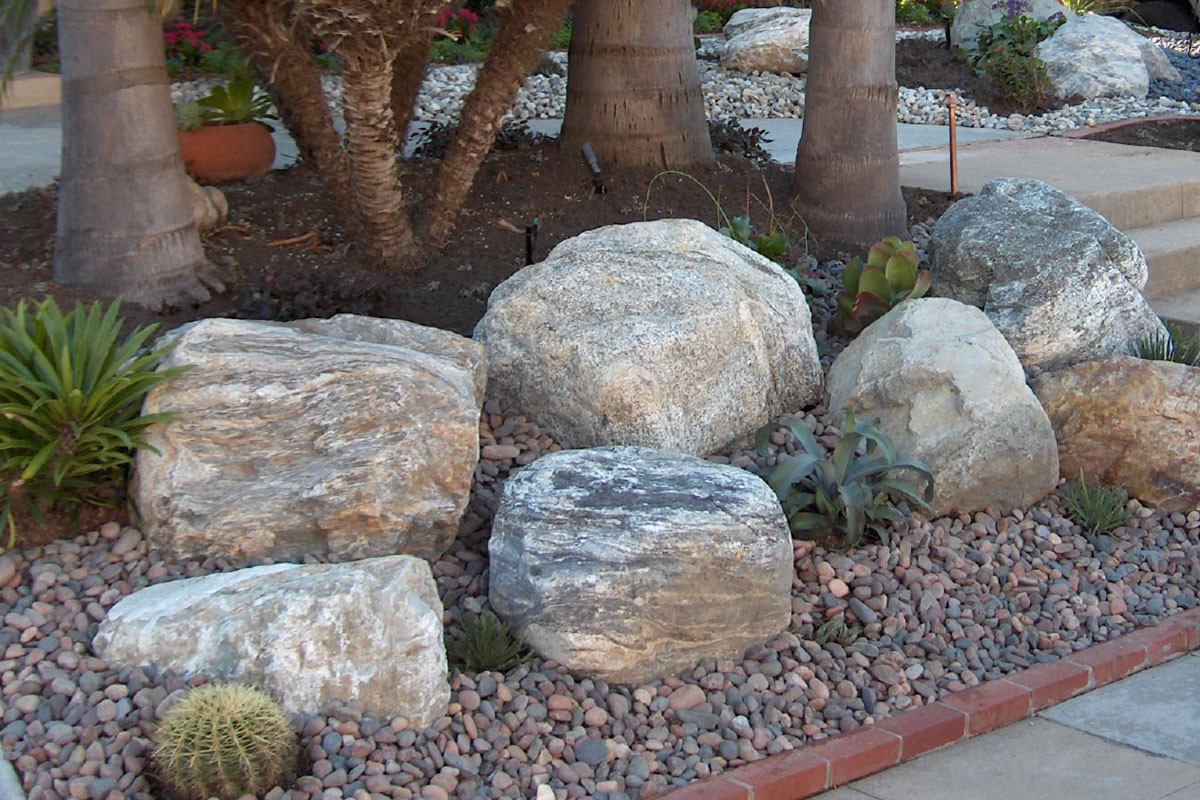Decorative rock landscaping is a beautiful and sustainable way to enhance your outdoor space. Wondering how much a ton of decorative rock costs? It typically ranges from $45 to $350 per ton, but prices vary depending on the rock type, size, and location. Discover creative landscape design ideas, explore various rock types, and find expert tips for successful installation at rockscapes.net. We help you create stunning rockscapes, transforming your yard into an eye-catching paradise with decorative rock, river rock, and landscape stone.
1. Understanding Decorative Rock Costs: An Overview
When planning a landscape project, knowing the cost of materials is crucial. So, How Much Does A Ton Of Decorative Rock Cost? The price can vary widely based on several factors. The typical range is $45 to $350 per ton. Let’s delve into the factors influencing this range to help you budget effectively and make informed decisions for your landscaping needs.
1.1. Factors Influencing the Price of Decorative Rock
Several factors can affect the cost of decorative rock. Being aware of these can help you make the most informed decision:
- Type of Rock: Different types of rocks, such as river rock, lava rock, and granite, have different price points due to their availability and processing requirements.
- Size and Shape: Larger rocks and uniquely shaped stones often cost more due to the difficulty in quarrying and transportation.
- Color and Finish: Rare colors and polished finishes can significantly increase the price. For example, white stones and Mexican beach pebbles are often more expensive due to their aesthetic appeal and limited availability.
- Location: Proximity to the quarry and transportation costs play a significant role in the final price. Areas farther from rock quarries may incur higher costs due to transportation expenses.
- Supplier: Prices can differ between suppliers. Home improvement stores, garden centers, and rock quarries may offer different rates based on their overhead and sourcing.
1.2. Average Prices for Common Types of Decorative Rock
Here’s a breakdown of the average prices for some popular types of decorative rock:
| Rock Type | Average Price Range (per ton) |
|---|---|
| River Rock | $45 – $130 |
| Lava Rock | $80 – $240 |
| Large Boulders | $100 – $350 |
| Bull Rock | $65 – $130 |
| Crushed Stone & Gravel | $10 – $50 |
| White Stones & Pebbles | $650 – $1,300 |
| Mexican Beach Pebbles | $475 – $800 |
| Crushed or Decomposed Granite | $45 – $95 |
These prices can serve as a starting point, but remember to check with local suppliers for the most accurate quotes.
2. River Rock: A Popular Choice and Its Cost
River rock is a versatile and attractive option for landscaping projects. But how much does a ton of decorative rock cost if you opt for river rock? River rock typically costs $45 to $130 per ton. Its smooth, rounded texture and natural color variations make it ideal for various applications.
2.1. Factors Affecting River Rock Prices
Several factors influence the cost of river rock:
- Size: Smaller river rocks (3/8” to 3/4″) are often used for pathways and playgrounds, while larger rocks (1” to 5”) are used for water features and garden borders. The larger the rocks, the higher the price.
- Color and Origin: Different regions produce river rocks with unique colors. For example, Arizona river rock may have different hues compared to Tennessee river rock, affecting the price.
- Quantity: Buying in bulk often reduces the per-ton cost. Suppliers may offer discounts for larger orders.
- Delivery: Delivery costs can significantly impact the overall price, especially for large quantities. Consider the distance from the supplier to your location.
2.2. River Rock Applications and Coverage
Understanding how much river rock you need is essential for budgeting. One ton of river rock can cover approximately 55 to 135 square feet at a depth of 2″ to 4″. The coverage area depends on the size of the rocks and the desired depth.
Here’s a quick reference:
| Depth | Coverage Area (per ton) |
|---|---|
| 2″ | 115 – 135 square feet |
| 3″ | 80 – 90 square feet |
| 4″ | 55 – 65 square feet |
2.3. Discover Stunning River Rock Landscaping Ideas at Rockscapes.net
Looking for inspiration on how to incorporate river rock into your landscape? Visit rockscapes.net for a wealth of design ideas, practical tips, and expert advice. Whether you’re dreaming of a serene water feature, a charming pathway, or a low-maintenance garden, Rockscapes.net can help you bring your vision to life.
 Multi colored rounded river rocks for landscaping
Multi colored rounded river rocks for landscaping
Alt text: Multicolored river rocks create a visually appealing and natural landscaping feature.
3. Lava Rock: A Unique and Cost-Effective Option
Lava rock is another popular choice for landscaping, known for its unique texture and vibrant colors. How much does a ton of decorative rock cost if you choose lava rock? Lava rock typically ranges from $80 to $240 per ton. This price depends on the color, size, and availability.
3.1. Benefits and Uses of Lava Rock
Lava rock offers several benefits:
- Lightweight: Easier to handle and transport compared to heavier rocks like granite.
- Moisture Retention: Retains moisture in the soil, reducing the need for frequent watering.
- Drainage: Porous nature provides excellent drainage, preventing waterlogging.
- Heat Retention: Retains heat, which can be beneficial for plants in cooler climates.
- Aesthetic Appeal: Available in red, black, and grey, adding a unique visual element to any landscape.
Lava rock is commonly used as a mulch alternative, in rock gardens, and as an additive to improve soil drainage.
3.2. Factors Affecting Lava Rock Cost
The cost of lava rock can vary based on:
- Color: Red and black lava rocks may be more expensive than grey due to their higher demand and aesthetic appeal.
- Size: Larger lava rocks, often used as decorative pieces, can cost more than smaller, gravel-sized pieces.
- Location: As with other rocks, transportation costs from the quarry to your location can influence the price.
3.3. Lava Rock Prices per Cubic Yard and Bag
If you’re not buying by the ton, lava rock is also available by the cubic yard or in bags. The typical prices are:
- Per Cubic Yard: $50 to $180
- Per Bag (10-50 lbs): $20 to $50
These options are suitable for smaller projects or for those who need a specific amount of lava rock.
 Red lava rock
Red lava rock
Alt text: Red lava rock adds a vibrant and natural touch to garden landscaping.
4. Other Decorative Rock Options and Their Costs
Besides river rock and lava rock, several other decorative rock options can enhance your landscape. Let’s explore some of these and their associated costs.
4.1. Bull Rock
Bull rock, typically 2″ to 5″ in diameter, costs $65 to $130 per ton or $80 to $150 per cubic yard. It’s used for yard drainage, French drains, landscape edging, and rock gardens.
4.2. Mexican Beach Pebbles
Mexican beach pebbles, with their smooth surface and sizes ranging from 0.5″ to 2.0″, cost $475 to $800 per ton or $25 to $60 per bag. They are ideal for backyard ground covering, driveways, walkways, and water features.
4.3. Large Landscaping Rocks and Boulders
Large landscaping rocks and boulders cost $120 to $350 per ton, depending on the size. These are often used as focal points in gardens and landscapes. The cost per stone varies with size:
| Stone Size | Stones per Ton | Single Stone Cost |
|---|---|---|
| 10″ | 40 – 45 | $3 – $7 |
| 12″ | 22 – 26 | $5 – $15 |
| 18″ | 10 – 12 | $12 – $35 |
| 24″ | 3 – 8 | $35 – $90 |
| 30″ | 2 – 4 | $50 – $180 |
| 36″ | 1 – 3 | $100 – $350 |
 Bull rock for landscaping
Bull rock for landscaping
Alt text: Bull rock provides practical drainage solutions and attractive landscape edging.
 Mexican beach pebbles
Mexican beach pebbles
Alt text: Mexican beach pebbles add an elegant and natural touch to outdoor spaces.
 Large landscaping rocks and boulders for landscaping
Large landscaping rocks and boulders for landscaping
Alt text: Large landscaping rocks create striking visual elements in a garden design.
5. Factors Beyond Material Costs: Delivery and Installation
While knowing how much a ton of decorative rock costs is essential, other expenses can significantly impact your project budget.
5.1. Delivery Costs
Delivery costs can range from $5 to $10 per ton for short distances (up to 25 miles) and $2 to $8 per mile for longer distances. Some companies charge $85 to $100 per hour for delivery.
- Minimum Orders: Most suppliers have minimum order requirements, typically 1 to 3 cubic yards or 1 to 4 tons.
- Location: Delivery to hard-to-access sites may incur additional charges.
5.2. Installation Costs
The cost to install landscape rock averages $25 to $100 per ton for labor only or $75 to $240 per ton with materials and delivery. Landscapers may charge $50 to $100 per hour for installation.
Factors affecting installation costs include:
- Site Preparation: Preparing the site may require fill dirt, costing $5 to $25 per cubic yard.
- Terrain: Difficult terrain increases labor costs.
- Accessibility: Hard-to-reach areas can also increase installation costs.
5.3. Landscape Rock Removal Costs
If you’re replacing existing rock, removal costs range from $50 to $200 per cubic yard for relocation on the same property and $220 to $250 per cubic yard for complete removal and hauling. Extra-large boulder removal can cost $425 to $1,200 per day plus hauling fees.
6. Optimizing Your Budget: Tips for Cost-Effective Landscaping
With a clear understanding of the factors influencing the price of decorative rock, you can take steps to optimize your budget and achieve beautiful results without overspending.
6.1. Buy in Bulk
Purchasing decorative rock in bulk is often more cost-effective than buying it in smaller quantities, such as bags. Bulk purchases can significantly reduce the per-unit price, especially for larger landscaping projects.
Benefits of Buying in Bulk
- Lower Per-Unit Cost: Suppliers typically offer discounts for bulk orders.
- Reduced Delivery Frequency: Fewer deliveries mean lower transportation costs.
- Consistent Material: Ensures uniformity in color and size, enhancing the overall aesthetic appeal.
How to Plan for Bulk Purchases
- Calculate Your Needs: Accurately measure the area you want to cover to determine the quantity of rock needed.
- Compare Prices: Get quotes from multiple suppliers to find the best deal.
- Consider Storage: Ensure you have enough space to store the bulk materials.
6.2. Choose Local Suppliers
Sourcing decorative rock from local suppliers can significantly reduce transportation costs, which are a major component of the overall expense.
Advantages of Local Suppliers
- Lower Transportation Costs: Reduced distance means lower delivery fees.
- Faster Delivery Times: Local suppliers can often deliver materials more quickly.
- Support Local Economy: Buying locally supports businesses in your community.
How to Find Local Suppliers
- Online Search: Use search engines to find rock suppliers in your area.
- Ask for Recommendations: Consult with local landscapers or garden centers for referrals.
- Check Local Directories: Look in local business directories for stone yards and quarries.
6.3. Consider Alternative Rock Types
If you’re on a tight budget, consider using less expensive types of decorative rock. For instance, gravel is often the cheapest option for landscaping.
Cost-Effective Rock Options
- Gravel: Average prices range from $10 to $50 per ton, making it an affordable choice for driveways and pathways.
- Crushed Stone: Similar to gravel, crushed stone is a versatile and economical option for various landscaping applications.
- Decomposed Granite: This material offers a natural look at a lower price point compared to more decorative stones.
How to Choose the Right Alternative
- Assess Your Needs: Determine the specific requirements of your project, such as drainage, stability, and aesthetic appeal.
- Compare Features: Evaluate the pros and cons of each alternative to ensure it meets your needs.
- Consider Long-Term Value: While cheaper options may save money upfront, consider their durability and maintenance requirements over time.
7. DIY vs. Hiring a Landscaper: Making the Right Choice
Deciding whether to tackle a landscaping project yourself or hire a professional landscaper depends on various factors, including your budget, skills, and the complexity of the project.
7.1. DIY Landscaping
Small river rock landscaping projects are often DIY-friendly, but grading and excavation require professional help.
When to Choose DIY
- Small Projects: Simple tasks like creating a small rock garden or pathway.
- Budget Constraints: DIY projects can save money on labor costs.
- Personal Satisfaction: Enjoy the satisfaction of creating something yourself.
DIY Essentials
- Truck: To haul the rocks from the quarry or store.
- Edging: To keep the stones in place.
- Weed-Blocking Fabric: To spread under the rocks.
- Digging Tools: For ground-leveling.
- Garden Rake: To evenly spread the rock layer.
- Hand-Tamp Tool: For leveling walkways.
7.2. Hiring a Landscaper
Hiring a professional landscaper can ensure the job is done correctly, especially for larger and more complex projects.
When to Hire a Landscaper
- Large Projects: Extensive landscaping that requires significant labor and expertise.
- Complex Designs: Projects involving intricate designs or features like water features.
- Time Constraints: If you don’t have the time to complete the project yourself.
Benefits of Hiring a Landscaper
- Expertise: Professional landscapers have the knowledge and experience to handle various landscaping challenges.
- Efficiency: They can complete the project more quickly and efficiently.
- Quality Results: Ensures the job is done to a high standard.
How to Choose the Right Landscaper
- Compare Bids: Get at least 3 bids from various contractors.
- Check Reviews: Look for company reviews on HomeGuide and Google.
- Verify Credentials: Pick licensed, insured, and bonded companies with years of experience.
- Payment Schedule: Don’t pay in full upfront; use a payment schedule.
7.3. Rockscapes.net: Your Partner in Landscape Design
Whether you’re a DIY enthusiast or prefer hiring a professional, Rockscapes.net offers valuable resources to help you create the perfect landscape. Explore our design ideas, get expert advice, and connect with local landscapers to bring your vision to life.
8. Maintaining Your Decorative Rock Landscape
Once your decorative rock landscape is installed, proper maintenance is essential to keep it looking its best. Regular care can prevent issues like weed growth, debris buildup, and soil erosion.
8.1. Weed Control
Weeds can detract from the beauty of your rock landscape. Effective weed control is crucial for maintaining its aesthetic appeal.
Strategies for Weed Control
- Weed Barrier Fabric: Install a high-quality weed barrier fabric beneath the rocks to prevent weed growth.
- Regular Inspections: Regularly inspect your landscape for weeds and remove them promptly.
- Herbicides: Use herbicides sparingly and carefully, following the manufacturer’s instructions.
8.2. Debris Removal
Over time, leaves, sediment, and other debris can accumulate between the rocks. Regular debris removal is necessary to keep your landscape clean and attractive.
Methods for Debris Removal
- Raking: Use a leaf rake to remove leaves and other loose debris.
- Hosing: Gently hose down the rocks to remove sediment and dirt.
- Manual Removal: Pick up larger debris by hand.
8.3. Preventing Soil Erosion
Decorative rock can help prevent soil erosion, but it’s essential to ensure proper installation and maintenance.
Tips for Preventing Soil Erosion
- Proper Depth: Ensure the rocks are installed at the appropriate depth.
- Edging: Use edging to contain the rocks and prevent them from shifting.
- Stabilization: In areas prone to erosion, consider using larger rocks or boulders for added stability.
8.4. Rockscapes.net: Your Resource for Landscape Maintenance
Rockscapes.net offers a wealth of information on maintaining your decorative rock landscape. From weed control to debris removal, our expert tips and advice can help you keep your landscape looking beautiful for years to come.
9. Inspiration and Ideas for Decorative Rock Landscaping
Decorative rock can be used in a variety of creative ways to enhance your outdoor space. Here are some inspiring ideas for incorporating decorative rock into your landscape.
9.1. Pathways and Walkways
Use smooth pebbles or river rocks to create charming pathways and walkways. The natural textures and colors of the rocks add visual appeal to your garden.
9.2. River Rock Gardens
In dry climates, colorful rocks can substitute grass or flower beds, creating a low-maintenance and visually stunning river rock garden.
9.3. Mulch Substitute
Garden stones prevent weed growth and soil moisture evaporation while withstanding heavy winds. Place rocks around each tree base for added protection.
9.4. Water Features and Borders
Stones can decorate pond bottoms, water fountains, pool borders, and borders around a house foundation or shed, adding a touch of elegance to your landscape.
9.5. Fire Pits
River rocks both inside and surrounding the base of a backyard fire pit will fireproof the area, creating a safe and inviting space for outdoor gatherings.
9.6. Rockscapes.net: Your Source for Landscape Inspiration
At Rockscapes.net, we believe that every landscape has the potential to be extraordinary. That’s why we’re dedicated to providing you with the inspiration, information, and resources you need to create the landscape of your dreams. Explore our gallery of stunning landscape designs, get expert advice from our team of professionals, and connect with local landscapers to bring your vision to life.
10. Frequently Asked Questions (FAQs) About Decorative Rock Costs
Here are some frequently asked questions about the cost of decorative rock, to help you make informed decisions for your landscaping project.
10.1. How Much Does a Ton of River Rock Cost?
The cost of river rock typically ranges from $45 to $130 per ton, depending on the size, color, and location.
10.2. How Much Does Lava Rock Cost Per Ton?
Lava rock costs between $80 and $240 per ton, varying with color and availability.
10.3. What Is the Cheapest Rock for Landscaping?
Gravel is the cheapest rock for landscaping, with prices ranging from $10 to $50 per ton.
10.4. How Much Does It Cost to Install Landscape Rock?
Installation costs range from $25 to $100 per ton for labor only or $75 to $240 per ton with materials and delivery.
10.5. How Much River Rock Do I Need?
One ton of river rock covers 55 to 135 square feet when spread 2″ to 4″ deep.
10.6. How Deep Should Landscape Rock Be?
Landscape rock depth depends on the stone size: 2″ for 1/2″ or less, 3″ for 1/2″ to 1″, and 4″ for 1″ or larger.
10.7. Where Can I Buy Landscaping River Rocks?
River rocks are available at home improvement stores, garden centers, hardware stores, rock quarries, or through landscapers.
10.8. What Are the Pros and Cons of Landscaping With Rocks and Stones?
Pros include low maintenance and longevity, while cons include weight and potential heat retention.
10.9. How Much Does River Rock Weigh?
River rock weighs 2,400 to 2,700 lbs or 1.20 to 1.35 tons per cubic yard.
10.10. Should I DIY or Hire a Landscaper to Install Rock?
Small projects are DIY-friendly, but grading and excavation require professional help.
By understanding these FAQs, you can better plan your decorative rock landscaping project and avoid unexpected costs.
Ready to transform your landscape with beautiful decorative rock? Visit rockscapes.net today for more inspiration, expert advice, and resources to help you create the outdoor space of your dreams. Don’t miss out on the opportunity to enhance your property’s curb appeal and create a sustainable, low-maintenance landscape that you’ll love for years to come.
Address: 1151 S Forest Ave, Tempe, AZ 85281, United States.
Phone: +1 (480) 965-9011.
Website: rockscapes.net.